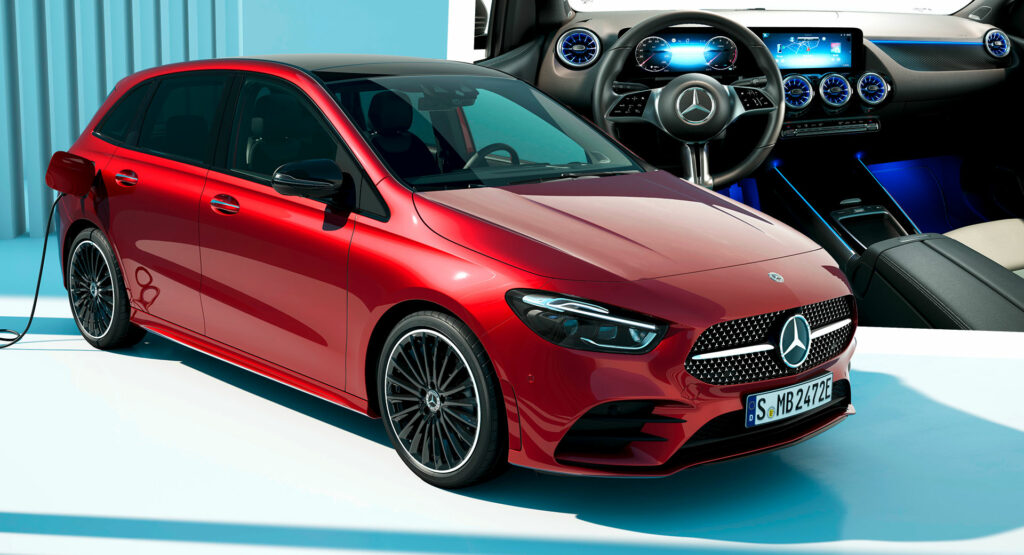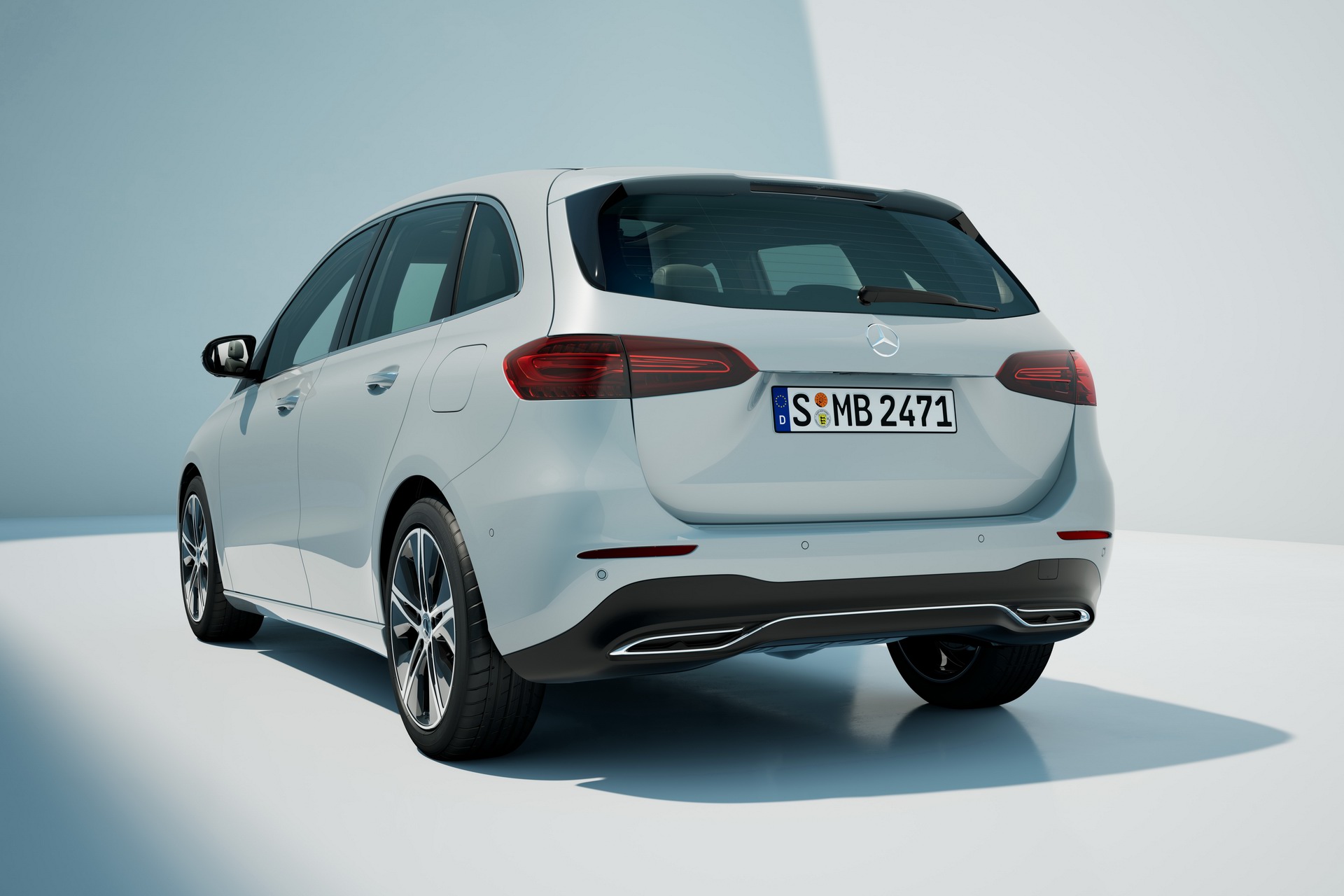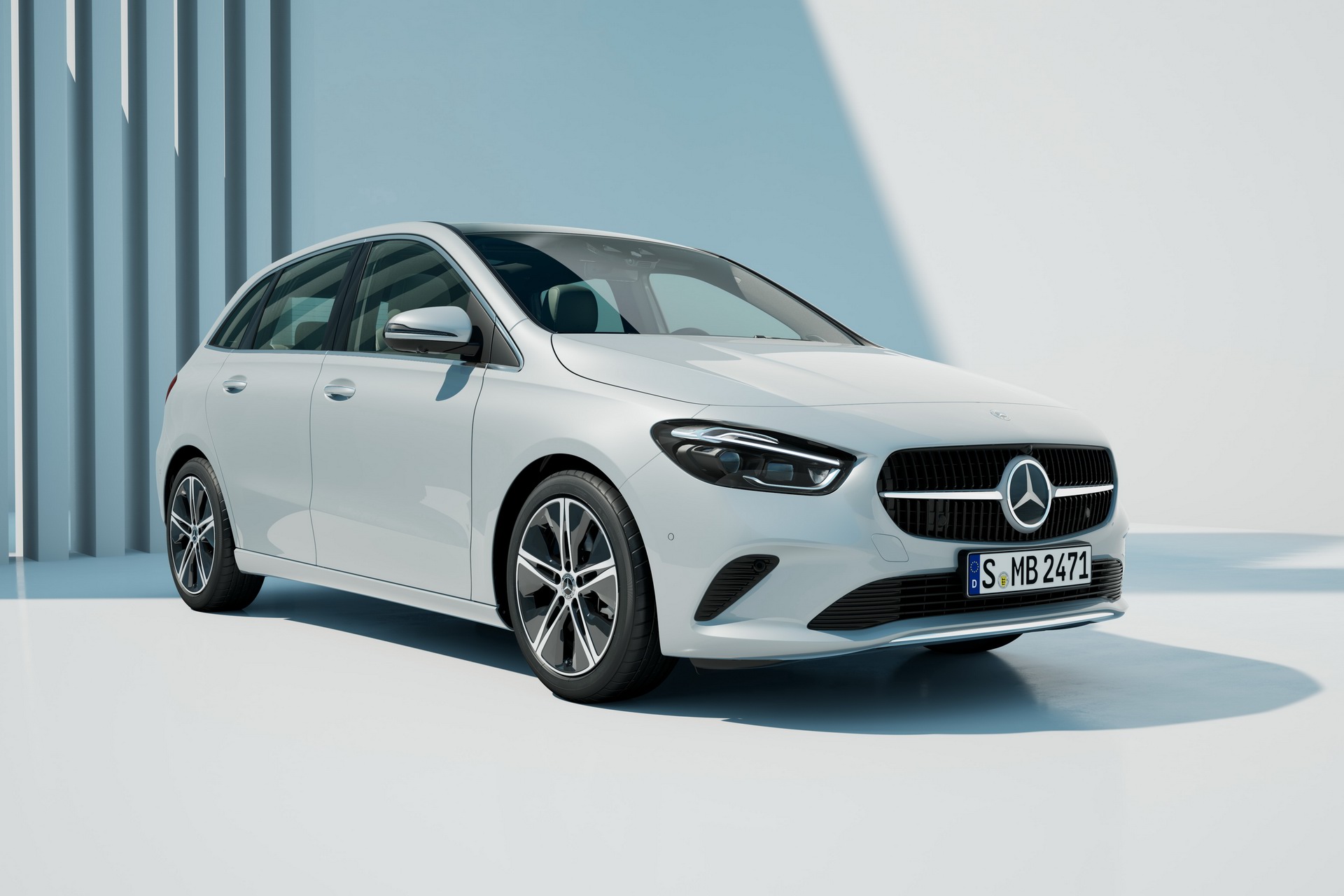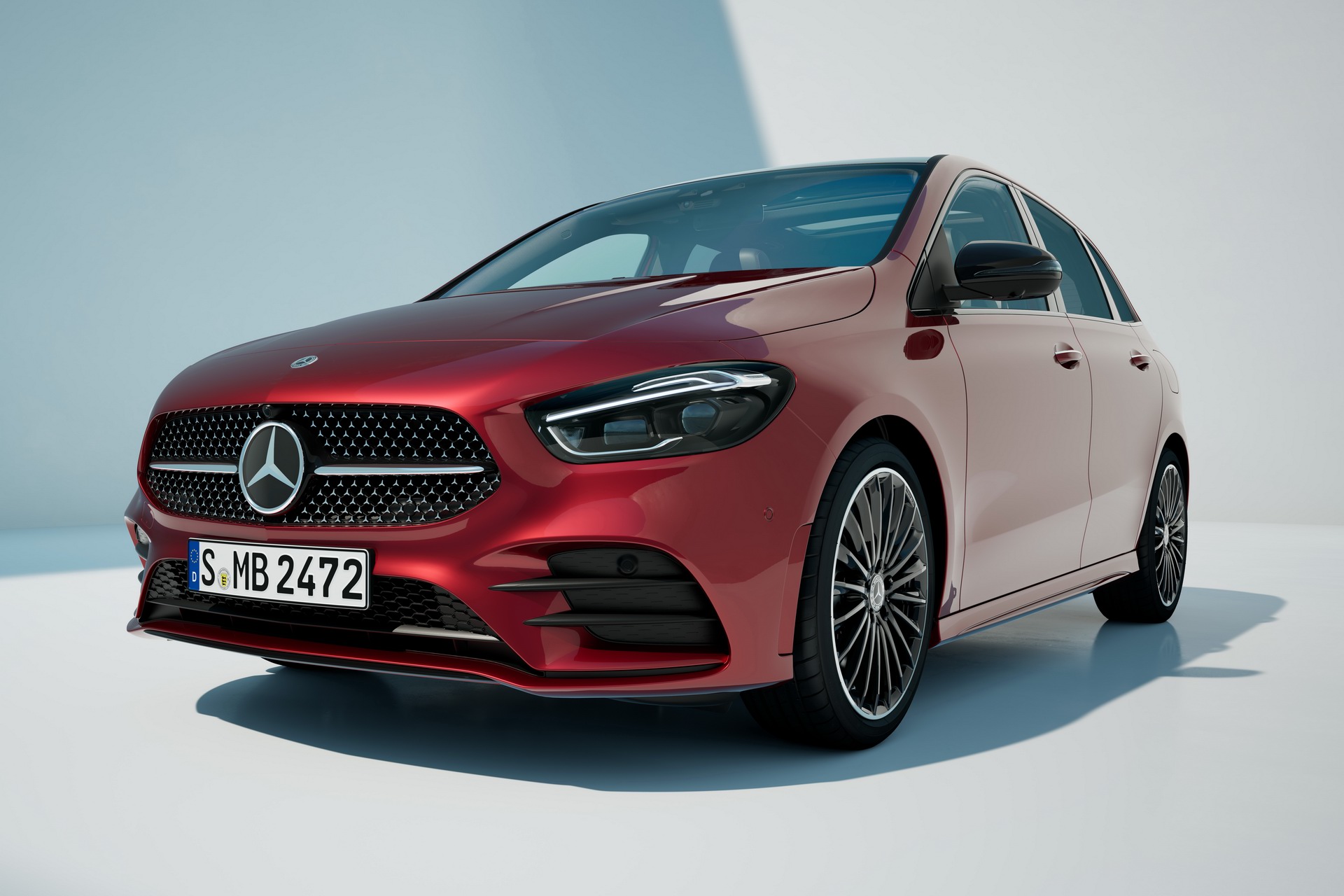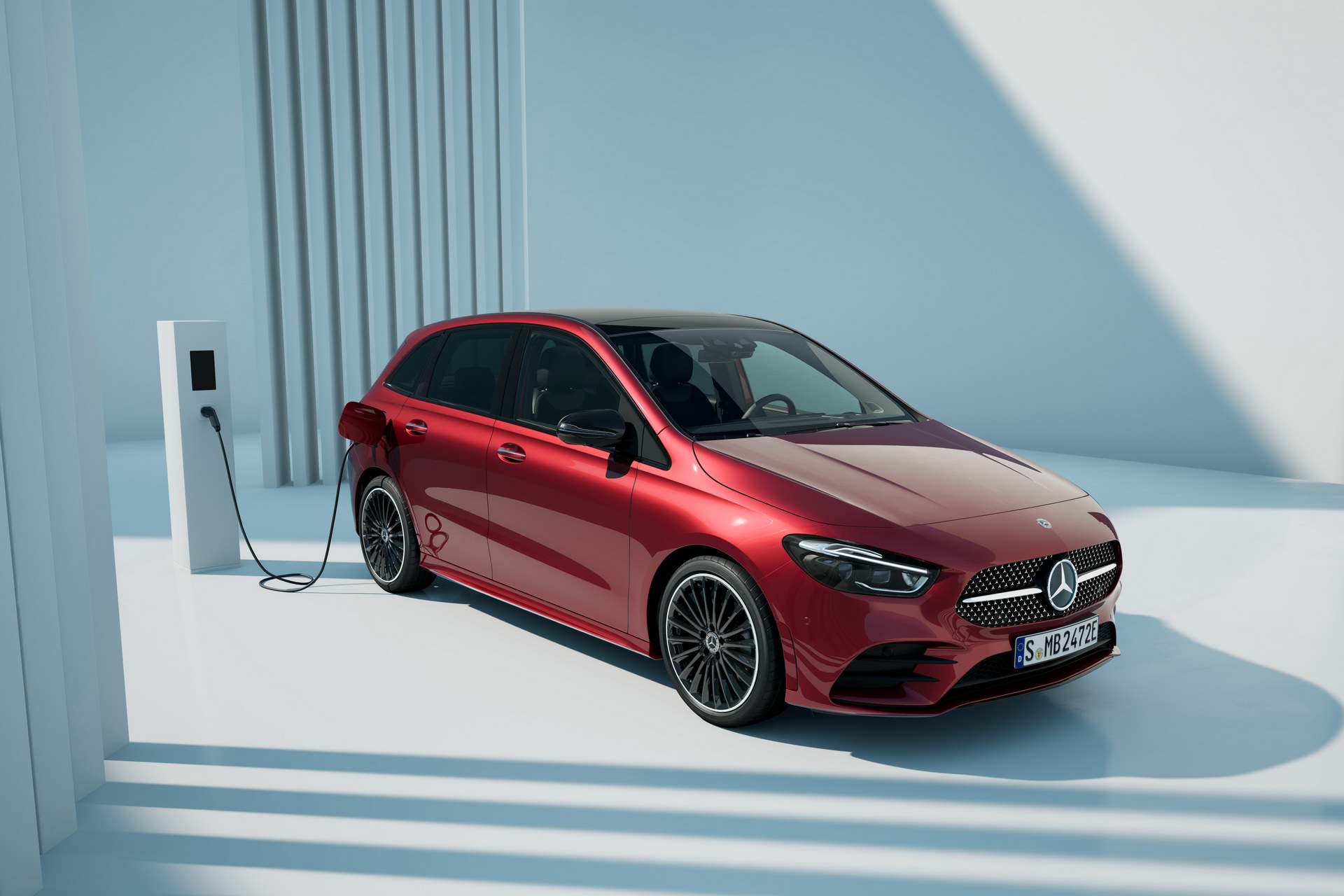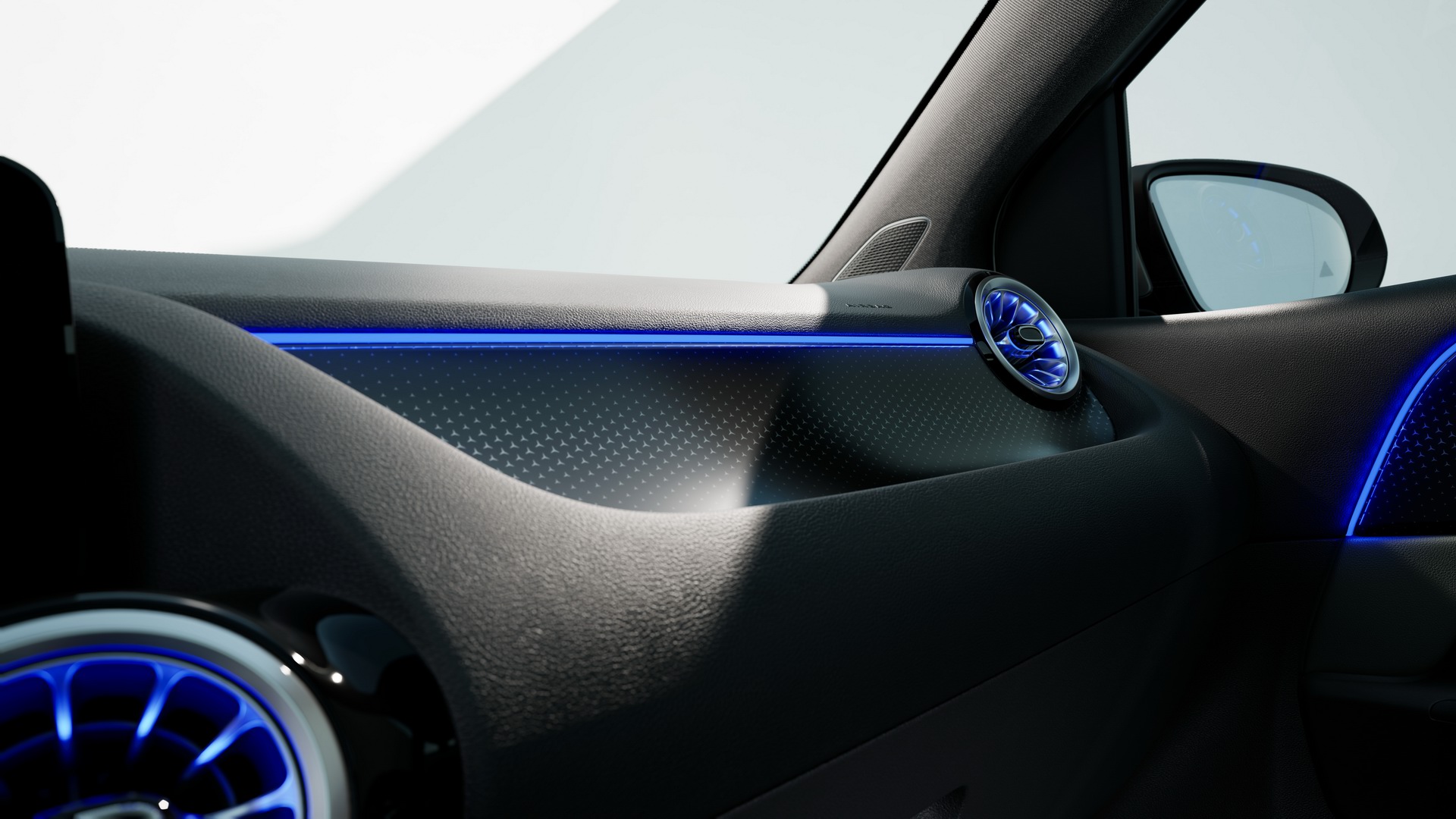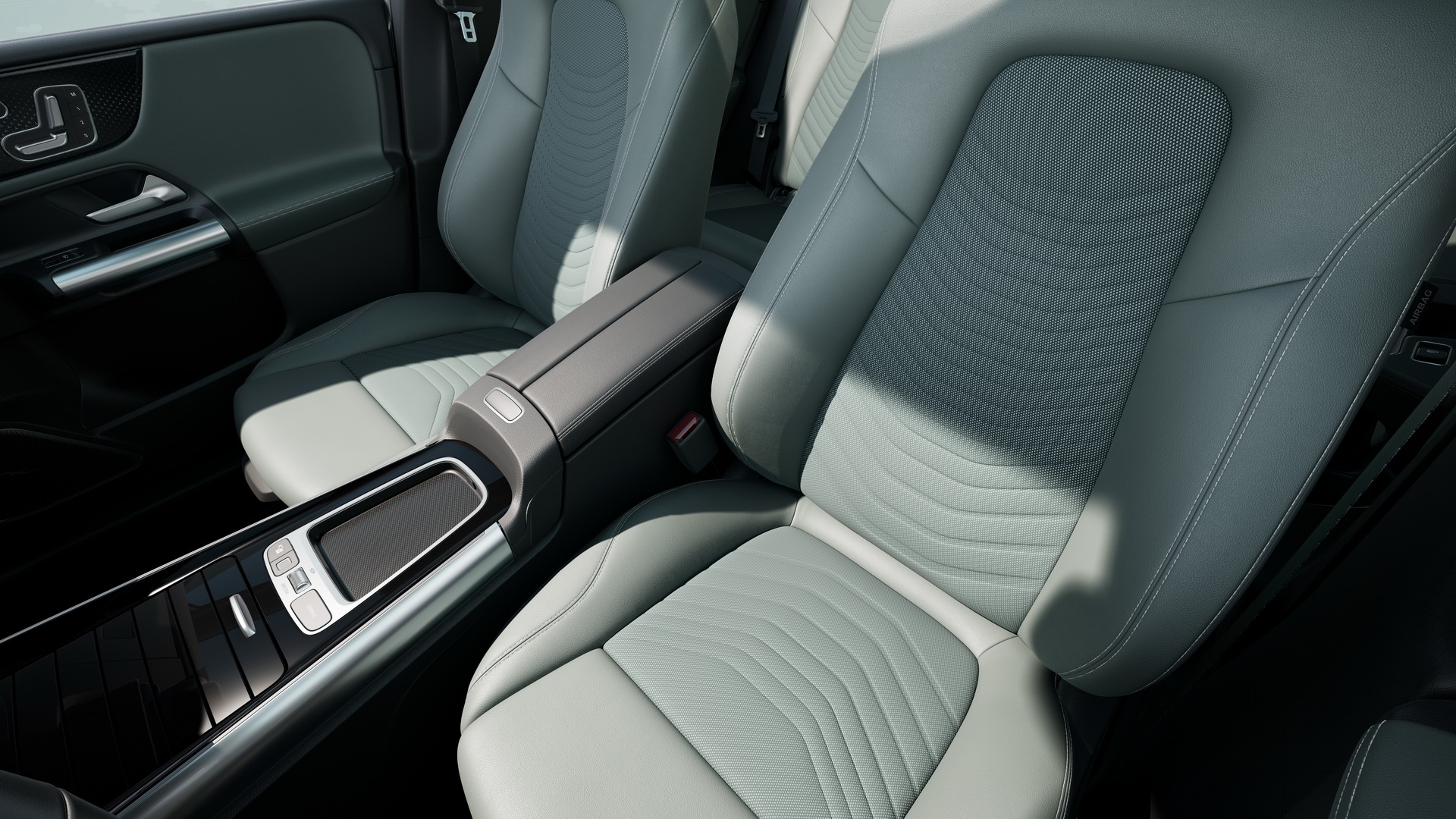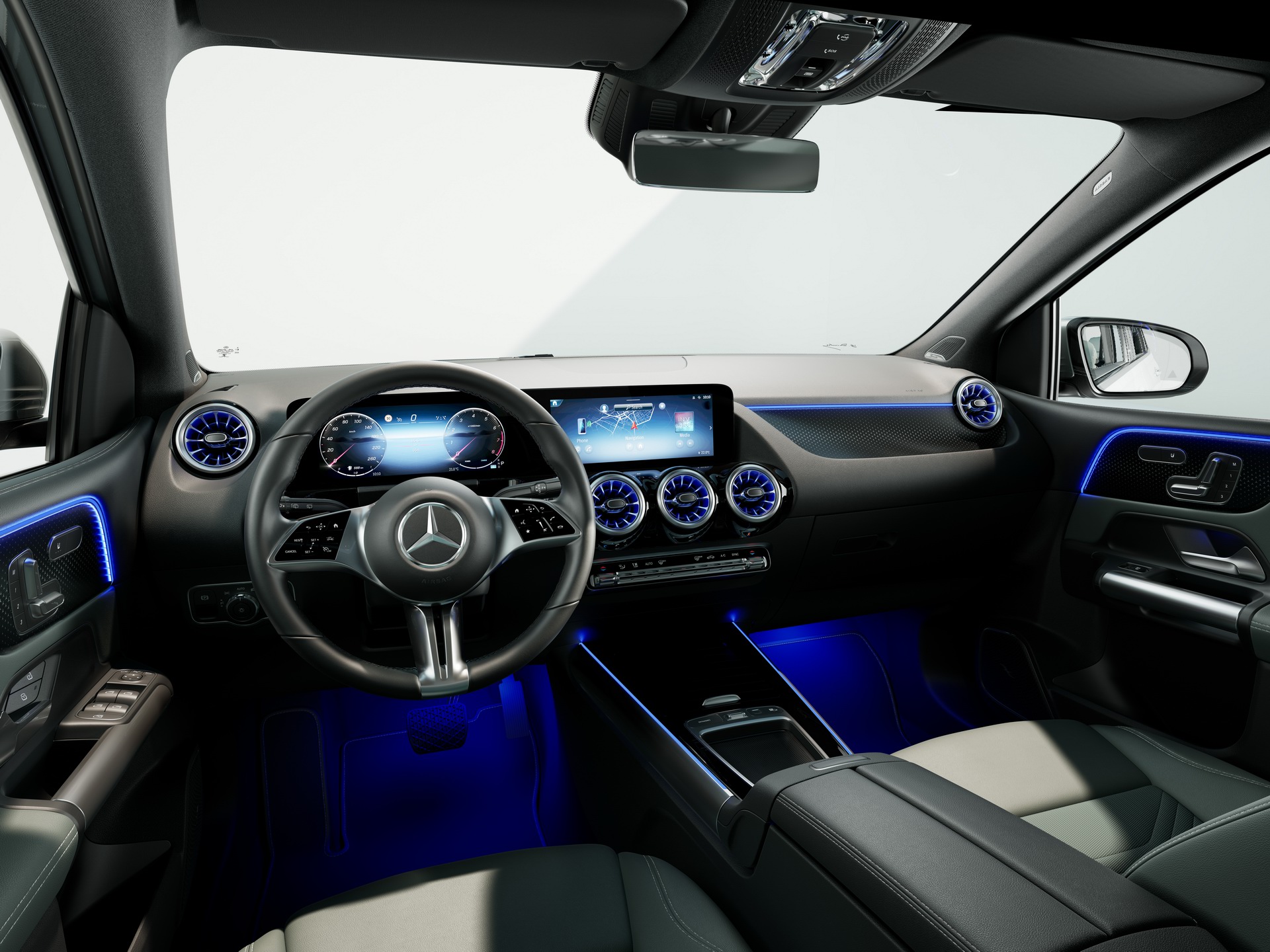This is the facelifted 2023 Mercedes-Benz B-Class and while you may need to squint to see the changes, they are there.
Mercedes-Benz’s designers first made some alterations to the front fascia of the B-Class, including a revised front bumper and tweaked grille aimed at giving the car “a dynamic boost.” New LED headlights are also available.
Complementing the updated front end is a modified rear with new two-part LED taillights and subtle spoilers attached to each side of the rear window. Four new wheel designs have also been developed, including a set of 19-inch rims.
Read Also: Mercedes-Benz A-Class And B-Class To Be Axed In 2025, Report Claims
Found in the cabin of the 2023 B-Class is a 7-inch digital instrument cluster and 10.25-inch infotainment display as standard although customers can option a larger 10.25-inch digital cluster. The interior has been further refined with a new flat-bottom steering wheel and the removal of the infotainment display’s rotary controller on the center console.
The MBUX system has also been updated and incorporates a fingerprint sensor, an improved Hey Mercedes voice assistant, and three redesigned display styles named Classic, Sport, and Discreet.
The car manufacturer has also made an effort to make more environmentally-conscious choices with the materials used through the cabin, including standard comfort seats with center sections that use 100 per cent recycled materials.
Some safety updates have also been made, including an upgraded Driver Assistance Package that includes an improved Lane Keeping Assist system, Active Steering Control, and an optional Trailer Maneuvering Assist function.
In terms of powertrains, all petrol variants of the 2023 Mercedes-Benz B-Class are electrified, most of which use a 48-volt mild-hybrid system with a belt-driven starter-generator. Depending on the market, the car will be offered in B 250 e, B 180, B 200, B 220 4Matic, B 250 4Matic, B 180 d, B 200 d, and B 220 d guises.
Plug-in hybrid versions of the facelifted B-Class are equipped with an improved high-voltage battery that, in addition to the 3.7 kW charging standard, can be charged with alternating current at up to 11 kW, instead of 7.4 kW as in the past. These models can also be charged up to 22 kW through a DC charger, meaning the battery can be juiced up from 10 per cent to 80 per cent capacity in 25 minutes. The electric motor has also been upgraded to deliver an extra 5 kW, resulting in a total of 80 kW.



